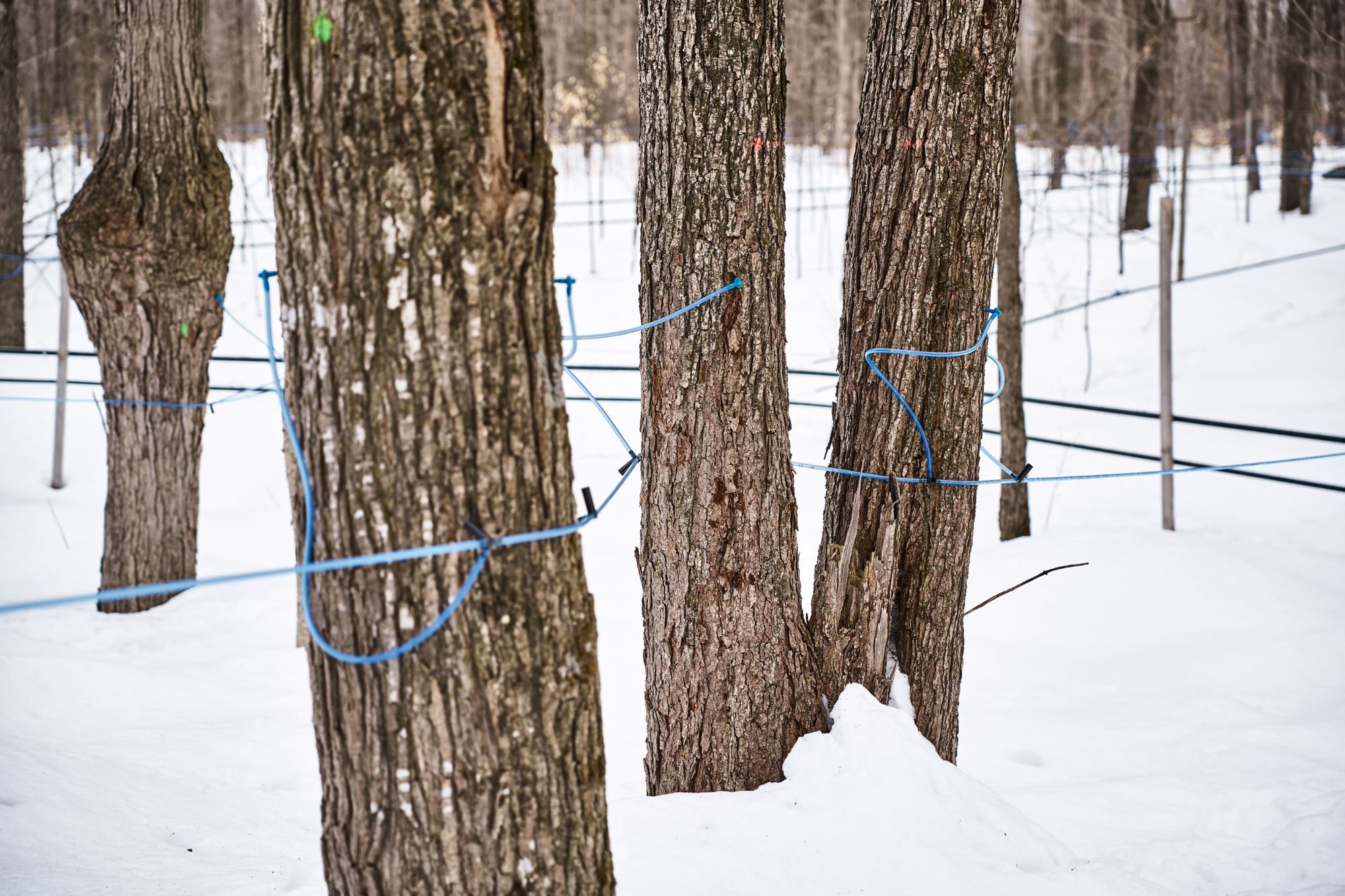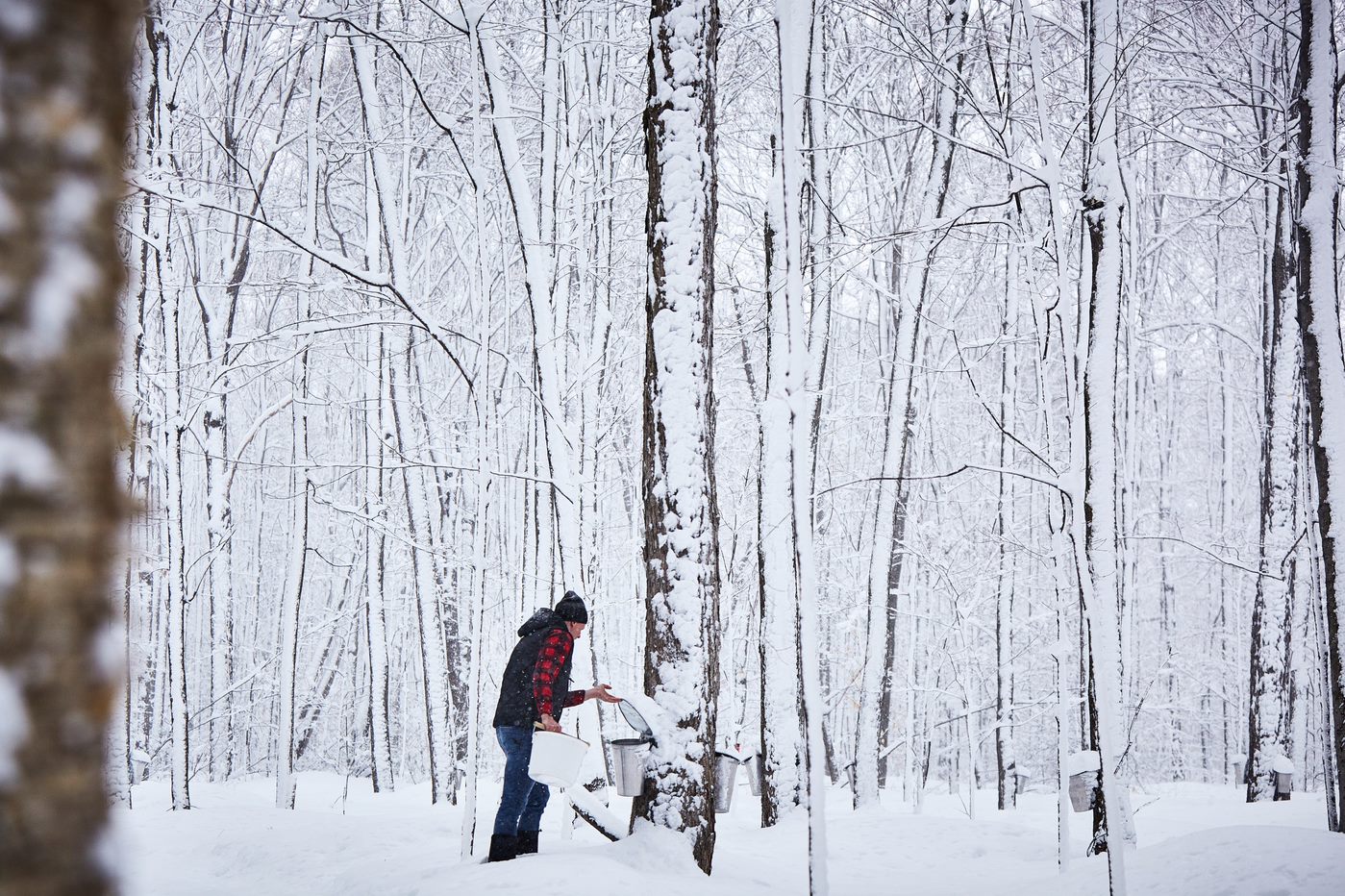Is Maple Syrup Sustainable?
THE SUSTAINABILITY CREDENTIALS OF MAPLE SYRUP
The climate crisis has pushed the topic of food sustainability into the mainstream, with many consumers now aiming to make more ethical decisions when it comes to buying food.
Sustainability is an especially big issue with sweeteners. Sugarcane – which has fuelled deforestation and led to pollution from fertilisers – has arguably had as great an impact on the environment as any other food product.
The effect of sugar production on the environment is now pushing consumers to explore other options for their sugar fix, with pure maple syrup often considered as an alternative.
But is maple syrup sustainable? And how do its sustainability credentials stack up when compared to other sweeteners? Find out below.
How maple syrup is sustainably farmed
Many species of maple tree, including the sugar maple, contain tree sap that can be used to make maple syrup.
In spring, the alternating freeze-thaw cycles of day and night create pressure in the trees that pushes the sap up from the roots towards the branches.
Under these conditions, the sap can be collected by drilling small holes (or “taps”) into the tree, with the sap then transported to a nearby sugar shack.
Here, it is boiled to reduce the water content, eventually forming the thick, deliciously sweet liquid we know as maple syrup.
This process has remained largely the same for hundreds of years – no fertilisers are used and trees are always given plenty of time to heal, with farmers working in accordance with nature.

The role of maple forests as habitats
In Quebec – the Canadian province responsible for producing 72% of the world’s maple syrup – there are more than 34 million maple trees used to produce maple syrup, and a further 53 million trees not currently in use.
Maple forests, which cover vast swathes of Quebec, are home to a large number of birds, mammals and insects, including over 50 threatened wildlife and plant species.
Central to the ecological balance of the forest, maple trees provide shelter and sustenance for a variety of species.
Honeybees collect nectar from maple trees at the start of spring, with the leaves of the tree home to more than 300 species of moth and butterfly.
Songbirds, screech owls and woodpeckers are all known to seek shelter in maple trees, while moose, deer, hares and squirrels feed on their buds, seeds and branches.
In addition, maple trees provide animals that live in the forests with the oxygen they need to breathe. Put simply, the forest ecosystem wouldn’t be the same without them!
The role of maple forests as carbon sinks
Maple forests not only support rich biodiversity, but also play a key role in mitigating the effects of climate change by capturing and storing carbon dioxide.
As maple trees grow, carbon is captured from the atmosphere and stored in the trunk, roots and surrounding soil until the tree dies. The process of photosynthesis also produces oxygen, improving the air quality of the forest.
Collectively, the 34 million trees currently in use in Quebec capture the amount of carbon produced by burning 97 million gallons of petrol every year – that’s the equivalent of 220,000 cars!
So while there are some emissions involved in the processing of maple syrup products, these are greatly outweighed by the carbon captured and stored in the sugar bush.
In fact, it’s estimated the maple forests of Quebec capture and store eight times the amount of carbon emitted during production.

How maple forests are sustainably managed
Many of the world’s forests are threatened by deforestation, a process which erodes one of the world’s most effective natural defences against global warming.
In an effort to preserve the ecological and environmental value of its maple forests, Quebec bans any commercial logging from taking place in the sugar bush.
In addition, maple syrup farmers must follow a set of guidelines for managing the sugar bush in line with the province’s sustainable forest management strategy.
Conservative tapping practices are put in place to ensure the trees are given enough time to recover from year to year.
Younger trees with a diameter at breast height of 12 inches are only tapped once, while older trees can be tapped in multiple places without risking permanent damage.
When these practices are followed, maple trees can be farmed sustainably for more than 100 years!
So, is maple syrup sustainable?
Derived from nature without the help of fertilisers, pure maple syrup is a sustainable alternative to processed sweeteners like table sugar.
Furthermore, the forests in which maple syrup is farmed serve as carbon sinks, sucking carbon dioxide from the atmosphere and converting it into oxygen.
The extent to which carbon is captured by the trees means that the maple syrup industry has a net-positive impact on the environment.
Not only is maple syrup more sustainable than refined sugars, but it also has a better carbon footprint than many other natural sweeteners.
Want to find out how to incorporate maple syrup into your cooking and baking? Check out our range of recipes with maple syrup for inspiration!
A natural source of energy
Maple syrup is a natural source of energy. Check out our recipes for food and drinks before, during, and after exercise.
)